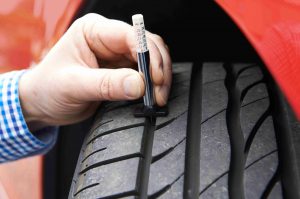Let us begin with the second portion of the question. No, retreading tyres is not safe for passenger vehicles.
It is understood that, excellent driving habits and proper maintenance are the keys to getting the most mileage out of your tyres. However, there will come a time when the tread is too worn and the tyres must be replaced. At this point, there are two options: purchase a new pair of tyres or retread the existing ones.
What exactly is tyre retreading?
Tyre retreading tries to revitalise aged tyres by replacing the tread and sidewalls. There are numerous techniques for retreading, and they are as follows:
- High-strength cement is used to secure the new tread to the tyre. The advantage of this method is that it can accommodate a wide range of tyre sizes and widths, but it does leave a visible seam where the two ends meet.
- Raw rubber is placed to the old tyre casing before being welded in a press at high pressure and temperature.
- Raw rubber is put to the old tyre casing before being pressed into the tread using a mould. It is not a typical procedure since it needs separate moulds for tyres of varying widths and diameters.
- The fourth and least usual approach is bead-to-bead moulding, which requires the insertion of new tread and sidewalls.
Why use tyre retreading?
The major advantage of retreading tyres is that it is less expensive. It’s popular in the transportation and aviation industries since it extends tyre life, and when it comes to vehicles with 18 wheels, tyre retreading may save you a lot of money. Some operators estimate that a good retread may add 500,000 kilometres to the life of a tyre.
It is also more environmentally friendly. Some tyres can weigh up to 70 kg. A fresh retread for this sort of tyre, on the other hand, only requires about 20 kg of new material. This significantly reduces the quantity of oil used to make new tyres, putting less reliance on natural resources.
Is retreading a good option for passenger tyres?
In that situation, shouldn’t you be retreading rather than replacing my passenger tyres? No way, and here’s why:
Because they deal with massive tyres made of extremely thick materials, retreading can be useful in the transportation and aviation industries. Your automobile tyres are composed of considerably thinner rubber, making them unsuitable for retreading since there is just not enough material to stick the new tread to.
There are other drawbacks that make tyre retreading dangerous:
- At high speeds, there is a risk of instability.
- Poor wet traction and braking performance.
- A lack of endurance.
- Retreading obscures additional possible tyre concerns. It’s impossible to know how frequently a tyre has been retreaded, and it’s also tough to determine the overall condition of the tyre, particularly its carcass.
For the reasons stated above, several insurance companies advise against using tyre retreading for passenger cars. It’s not only dangerous, but the rise of budget tyres has negated its cost advantage; you now can buy car tyres with the same amount. There are a lot of passenger tyre brands that come with affordable prices!
We all want to keep our expenses as low as possible, but the tyre quality is not one of them. However, a new pair of tyres will last longer than the retreaded tyres. If your tread seems to be worn, consult with the Zeetex tyre outlet near you and we’ll make sure you drive away on the best passenger car tyres intended to keep you on the road.




